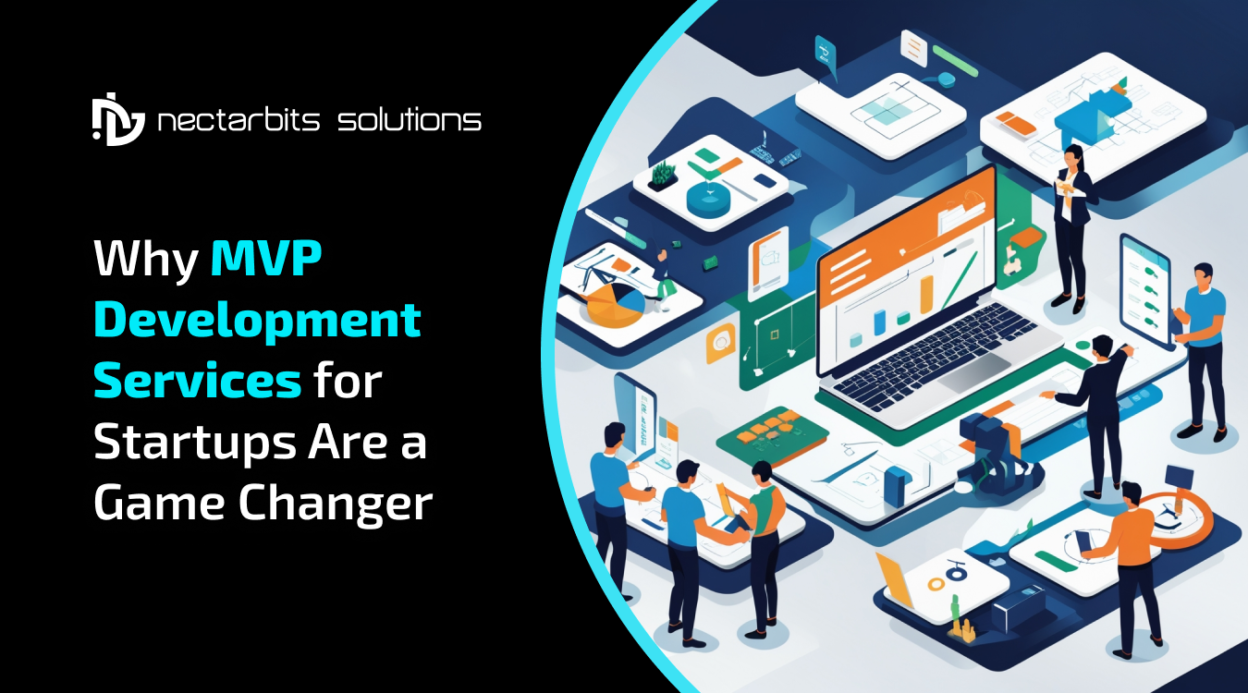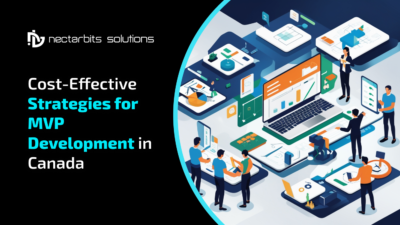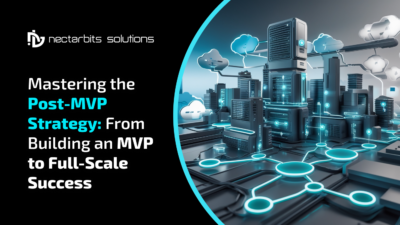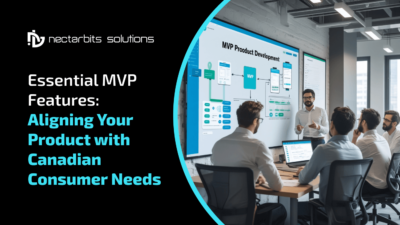fast-paced world of startups. Minimum Viable Product (MVP) is not a buzzword, it is a strategic approach that enables entrepreneurs to build the product in a way that will allow them to test their idea, collect feedback, and refine their product before sinking a great deal into it. In this blog, we will talk about the importance of MVPs for startup success, how they can reduce the risks, and how working with an MVP Development Company can make things easier for your business.
Why MVPs Are the Secret Weapon for Startups
It’s a high-risk environment and startup failure rates are staggering. This new data indicates that over 75% of startups fail because they scale prematurely and 48% of startups fail within the first year. This is where MVP Development comes into play. Startup MVP Development facilitates entrepreneurs the practice of validating their ideas without losing time and money on an idea that does not appeal to the target audience.
An MVP is not just a minimal version of your product, it’s a strategic tool to verify critical assumptions, gather user feedback, and iterate as fast as possible. For example, companies such as Spotify or Uber started with simple MVPs and since then they’ve become industry giants. Enterprises that follow this approach are thus able to market faster and create a competitive advantage which could ultimately attract such investors.
The Strategic Benefits of MVP Development
1. Risk Mitigation and Cost Efficiency
The biggest benefit of using MVP Development Services for Startups is the ability to minimize risks. For example, instead of developing a full-scale product, startups can choose to launch the products with only the essential features and test their vision before a fully-fledged custom software development. With this approach both time and money get saved, as the development of a digital product takes anywhere between $60k to $150k.
MVPs also help startups to fail fast and learn faster. If the product doesn’t take off with users, entrepreneurs can pivot and rework their ideas without putting much at stake. The lean startup methodology is based on continuous improvement using real-world feedback on an iterative basis.
2. Early User Feedback and Market Validation
An MVP isn’t just about making a product: It’s about validating your idea with real users. That’s why, by releasing a basic version of your product, you can get invaluable insights into what users like, what makes them unhappy, and what they expect. This is very important, in helping refine your product and make sure it’s what your target audience needs.
For example, Instagram began life as a location check-in app, that subsequently pivoted to become the photo-sharing giant we know today. Leveraging user feedback from their MVP, they were able to transform this on a much greater scale.
3. Faster Time-to-Market
In today’s fiercely competitive market, speed is everything. Startup MVP Development is the process through which entrepreneurs can get their product out quickly to the market, gaining a competitive edge over competing entrepreneurs. Startups can give themselves a better shot at launching faster, by focusing on core features and avoiding the Feature Creep trap.
Read More:- Importance of Successful Prototype Development for Businesses
How to Build a Successful MVP
1. Identify Your Target Audience
The first step in the program that MVP Development Services offers is getting to know the audience you desire to reach with the MVP. Who are they? What are their pain points? If you want to learn what insights you need to build a product your users love, then you should try out conducting surveys, interviews, or market research to get the answers.
2. Define Core Features
Simple is the key to a successful MVP. Pick your users’ core problems and focus on the parts that solve 90% of them. It is a bad idea to build everything on your problem list, as they will only slow your launch, and divert your value from your core problem.
3. Create a Prototype
Create a prototype before you dive into development, so you can visualize your product. Tools like Figma or Sketch can help you design wireframes and mockups, allowing you to gather feedback early in the process.
4. Test and Iterate
When you are done with your MVP, release it to a small number of users to get their feedback. Use this feedback to get better at your product and make data-driven decisions. Remember though that MVPs aren’t about perfection, they’re about continuous improvement.
Why Partner with an MVP Development Company?
Some of the startups might try to build their MVP in-house, but partnering with an MVP Development Company can bring benefits.
1. Technical Expertise
An experienced MVP Development Company in the USA understands the technical expertise. These companies help you get the best MVP launched and built by choosing the right tech stack and adding cutting-edge technologies like AI and IoT to your MVP.
2. Cost-Effective Solutions
It can be expensive, and it takes a lot of time to hire a full-time development team. Startups can save money by outsourcing to an MVP Development Services provider, so they can focus on the core business activities.
3. Faster Development Cycles
An MVP Development Company works in collaboration with a team of qualified professionals to facilitate the development process and achieve your product in the market as quickly as possible. The quicker you can get a competitive edge the better it is for you.
Ready to partner up with a professional MVP Development Company? Consult Us Today!
Real-World Examples of Successful MVPs
Before scaling into industry-leading companies, many startups made it big with MVPs. For instance:
- Spotify:-
This app began as a simple music streaming service before expanding into podcasts and video content.
- Dropbox:-
This app used a video demo as its MVP to validate user interest before building its file-sharing platform.
The examples of MVP Software Development are the evidence of how ideas can turn into successful businesses.
Conclusion
MVP Development Services for Startups is definitely not an option, but a must. Worsening, and validating your idea with an MVP lets you save time, mitigate risks, harvest feedback, and prove that your product is fulfilling the needs of your target audience. If you are a first-time founder or a seasoned entrepreneur, you can partner with an MVP Development Company to translate your vision into reality.
That is why, if you are ready to start on your path to startup success, make custom software development services your path away to help you create your MVP. The important thing to remember is to always start small, iterate rapidly, and always keep the needs of your users in focus.
Such an approach allows you to sail through the rough seas of life in a startup and create a product that actually produces a sense of camaraderie and loyalty with your audience. Don’t give up on your great idea— start your Startup MVP Development journey now!
Frequently Asked Questions (FAQs)
1. What is MVP Development, and why is it essential for startups?
MVP (Minimum Viable Product) Development involves creating a basic version of your product with essential features to validate your idea. It helps startups test their vision with real users before investing heavily in development.
- Enables early market validation.
- Reduces financial risks and development time.
- Provides actionable user feedback to refine the product.
2. How does partnering with an MVP Development Company benefit startups?
An MVP Development Company provides technical expertise, cost-effective solutions, and faster development cycles. They ensure your product is market-ready.
- Helps choose the right technology stack.
- Saves money compared to hiring an in-house team.
- Ensures a competitive edge with quick market entry.
3. How do MVP Development Services reduce risks for startups?
MVP Development minimizes risks by validating product-market fit with a smaller investment. Startups avoid building features that users don’t need.
- Focuses on core features that solve user problems.
- Provides data-driven insights for future development.
- Reduces the likelihood of scaling prematurely.
4. What is the typical process for creating an MVP?
Creating an MVP involves several steps to ensure success:
- Identify your target audience and pain points.
- Define the core features needed to address these problems.
- Develop a prototype and gather early feedback.
- Test, iterate, and improve based on real-world data.
5. Can an MVP turn into a successful business?
Yes, many industry leaders started with an MVP. Examples include Spotify, Dropbox, and Instagram. They validated their ideas and iterated to achieve market success.
- Spotify began as a simple streaming service.
- Dropbox used a video demo to gauge interest.
- Instagram pivoted from a check-in app to a photo-sharing platform.




